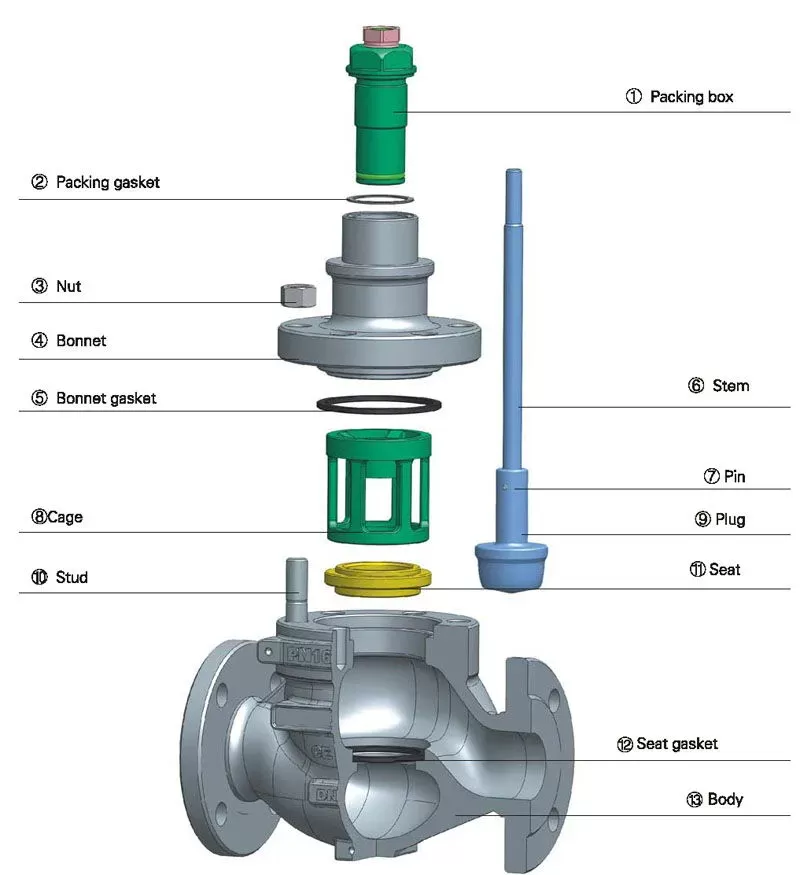Notifications

6 minutes, 53 seconds
-26 Views 0 Comments 0 Likes 0 Reviews

Introduction
We are a leading control valve manufacturer in China, providing high-quality valves and control actuators designed to meet a wide range of industrial applications.
Control valves are fundamental components in industrial fluid regulation, responsible for modulating flow, pressure, and level within a wide range of processes. When controlling clean fluids, many valve designs can effectively combine precise modulation with tight shut-off capabilities. However, the situation becomes considerably more complex when the fluid contains solids, such as slurry applications. In these cases, achieving both reliable flow control and complete isolation poses significant challenges, as no valve design offers a perfect solution.
Standard control valves may initially provide tight shut-off, but abrasive fluids cause rapid wear and erosion, resulting in leakage shortly after installation. Consequently, it is not industry best practice to rely on a single control valve for both flow regulation and complete isolation in slurry service. Instead, manufacturers typically recommend installing a dedicated on/off isolation valve downstream or upstream of the control valve to ensure proper sealing when needed.
Understanding Leakage Classifications
To help users evaluate valve performance regarding leakage, industry standards define leakage classes for control valve seats. These classifications provide a benchmark for how much fluid may leak through a valve seat when fully closed. Below is an overview of the common leakage classes:
Class I: Represents the least stringent standard, allowing considerable leakage. Valves in this category are intended for non-critical applications where minor leakage is acceptable.
Class II: Offers moderate leakage control but is still suitable only where some leakage is tolerable.
Class III: Provides tighter shut-off than Class II, suitable for processes that require moderate sealing but can accommodate limited leakage.
Class IV: Typical for metal-seated slurry control valves, Class IV achieves a tighter seal while balancing durability and performance in abrasive environments. Leakage is minimized but not eliminated.
Class V: Designed for very low leakage rates, these valves are commonly used for isolation purposes. However, metal-seated valves rarely maintain Class V ratings in slurry service due to wear and erosion, degrading quickly to Class IV or worse.
Class VI: The highest level of tight shut-off, often termed "bubble-tight," achieved using resilient seats (e.g., rubber or urethane). These valves are ideal for critical isolation in pharmaceutical, food, or other clean applications.
Common Industry Standards
Several key standards guide the design, testing, and classification of valve leakage:
ASME B16.34: Focuses on valve design and pressure ratings but does not specify allowable leakage rates.
API 598: Provides comprehensive inspection and testing criteria for isolation valves, including leakage testing for both metal and resilient seats.
MSS SP61: An earlier hydrostatic testing standard, less commonly used today but foundational in valve testing protocols.
ISO 5208: An international standard defining multiple levels of internal leakage acceptance, with specific criteria negotiated between purchaser and manufacturer.
ANSI FCI 70-2: Defines test procedures and leakage classes (I to VI) specifically for control valves, widely used for internal leakage testing.
ISA S75: Specifies hydrostatic testing procedures for control valves, particularly for external leakage testing.
Together, these standards ensure valve reliability, safety, and consistency across industries worldwide.
Factors Affecting Leakage Performance in Slurry Applications
Valve Design:
The valve’s sealing mechanism and seat type significantly influence leakage. Resilient seats typically provide superior shut-off but lack abrasion resistance. Metal seats offer durability in slurry but sacrifice tight sealing.
Material Selection:
Hardened metals and corrosion-resistant alloys help resist erosion and wear but cannot fully prevent leakage over time in abrasive slurries.
Operating Conditions:
High pressure, temperature fluctuations, and abrasive or corrosive media exacerbate wear and leakage. Specialized valve designs or materials may be required.
Maintenance and Wear:
Regular inspection and maintenance extend valve life, but inevitable wear in slurry service degrades sealing surfaces, increasing leakage over time.
Choosing the Right Valve for Your Application
Clean Fluids: For fluids free of solids, valves with Class V or VI tight shut-off are suitable, offering both precise control and isolation.
Slurry Applications: Metal-seated valves rated at Class IV are typically recommended. These valves balance durability with leakage performance. However, for isolation, a separate on/off valve should be used.
Critical Isolation Needs: Resilient-seated valves with Class VI shut-off provide bubble-tight sealing but are generally unsuitable for abrasive or high-temperature slurry service.
Conclusion
Valve seat leakage classification is a critical factor for engineers and operators when selecting control valves, especially for challenging slurry applications. While clean fluids allow for tight shut-off and precise control in one valve, slurry media demand a compromise between durability and leakage control.
Metal-seated slurry control valves provide robust performance with Class IV leakage, accepting some leakage as inevitable due to abrasive wear. For tight isolation, additional on/off valves with resilient seats and Class V or VI ratings are necessary.
By understanding these classifications, applicable standards, and the operational challenges of slurry service, users can make informed decisions that optimize process safety, control, and valve longevity.Know more about Google SEO Directory

